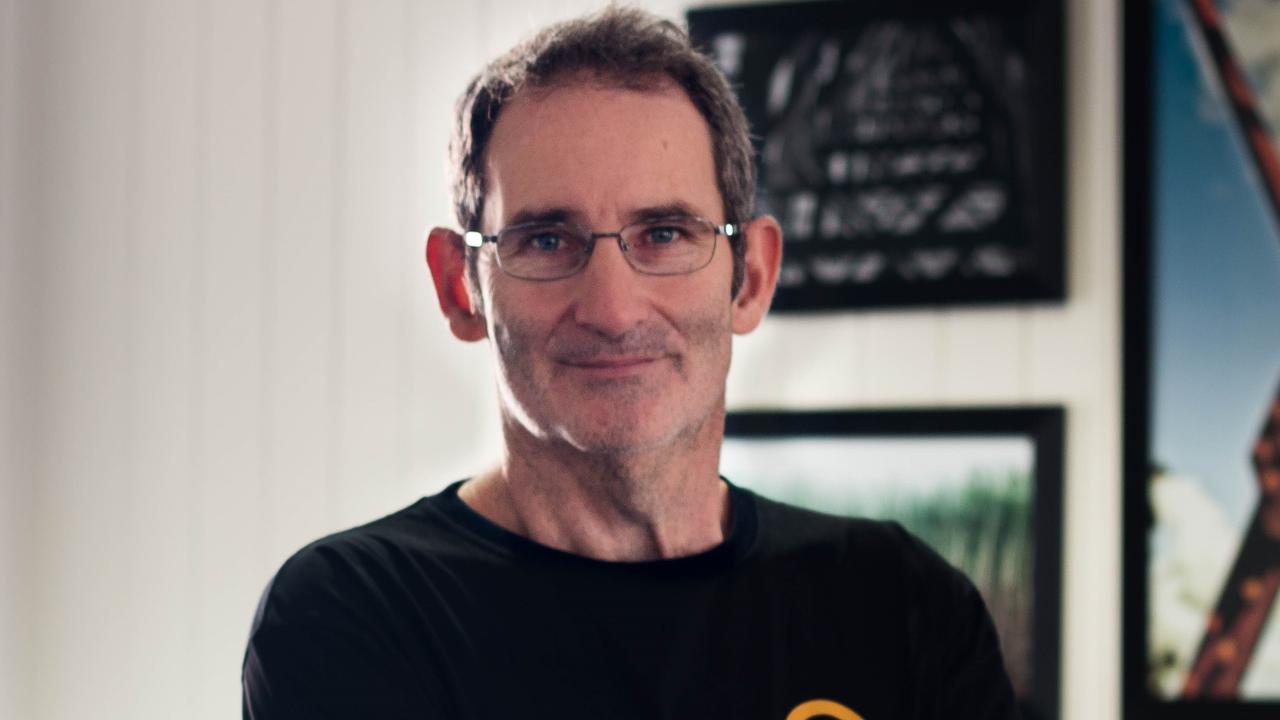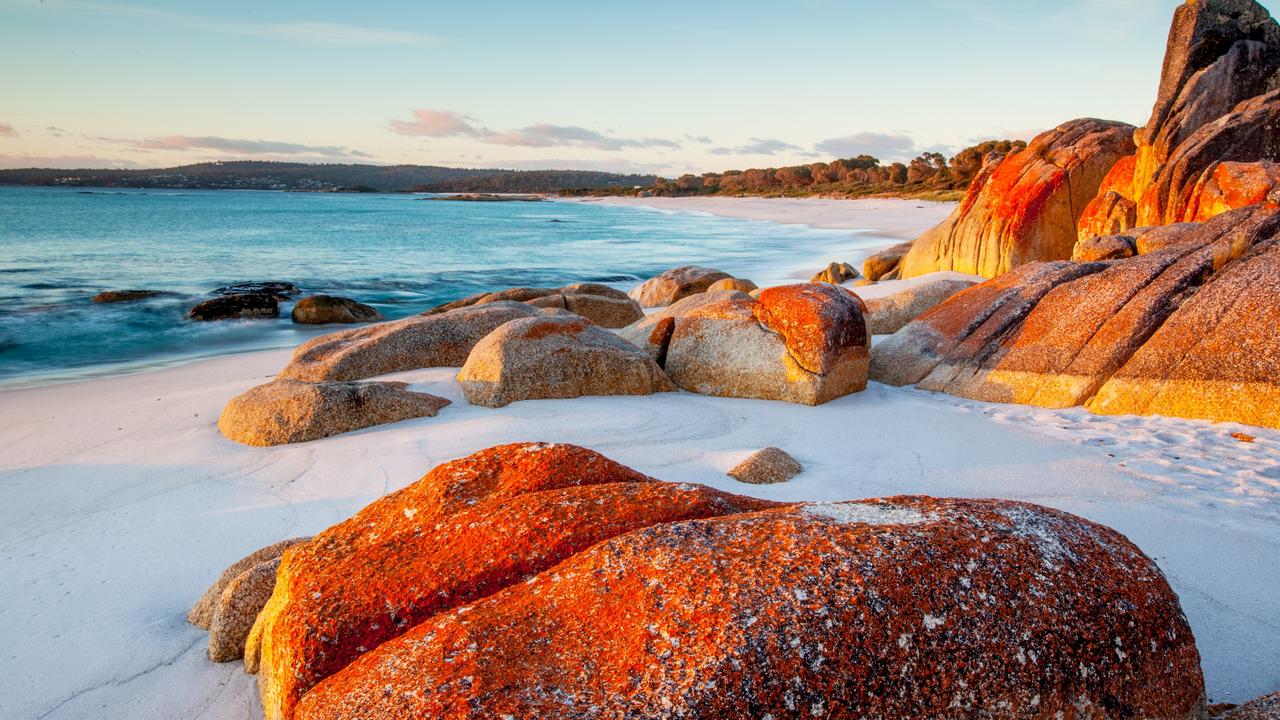Fish farmer hatches plan for the ‘wagyu’ of Murray cod
Riverina producer Aquna Sustainable Murray Cod wants to take its very own ‘wagyu of fish’ to the top restaurants of the world.
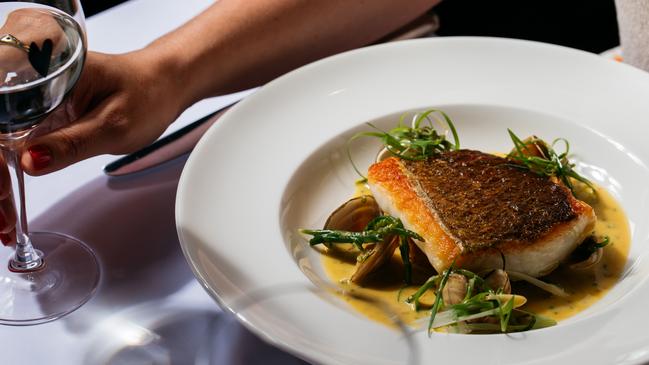
Business
Don't miss out on the headlines from Business. Followed categories will be added to My News.
The $120m fish farmer Aquna Sustainable Murray Cod is working with the CSIRO to certify its own breed to boost the integrity of the “green-friendly” fish it grows.
In a nod to the French appellation system that oversees geographical origins of wine, cheese and butter, the giant creamy, Murray cod is native to the Riverina region of southern NSW.
The ASX-listed producer which trades on the ASX under the name of Murray Cod Australia, is developing a strain called Aquna Cod that will only grow at its unique ponds outside of Griffith.

“Just as you have Hereford, Angus beef or Wagyu beef, we’re in the process of developing a strain of Murray cod which will be a piece of intellectual property that no one else in the world will have,” Murray cod’s chief executive, Ross Anderson, said.
Mr Anderson and his team have been working with science agency CSIRO for the past few years in a painstaking process where together have jointly identified family groups and mapped out a breeding program.
He likened it to developing the “Waygu of fish” whereby the breed would develop consistency on growth rates, fish size and, importantly, the fat content of the flesh, which in the kitchen translates to creaminess of the fillet.
“Aquna has been differentiated already by the customers as a brand, and in the next few years it’ll be able to be differentiated as a specific breed – and that gives it even more robustness in the marketplace,” Mr Anderson said.
A harvest-ready fish would vary in size depending on its destination, but exports to Aquna’s customers across Asia prefer fish harvested at up to 1kg, while Australian restaurants and chefs prefer bigger fish of about 2.8kg. It takes more than two-and-a-half years to grow the full-sized fish.
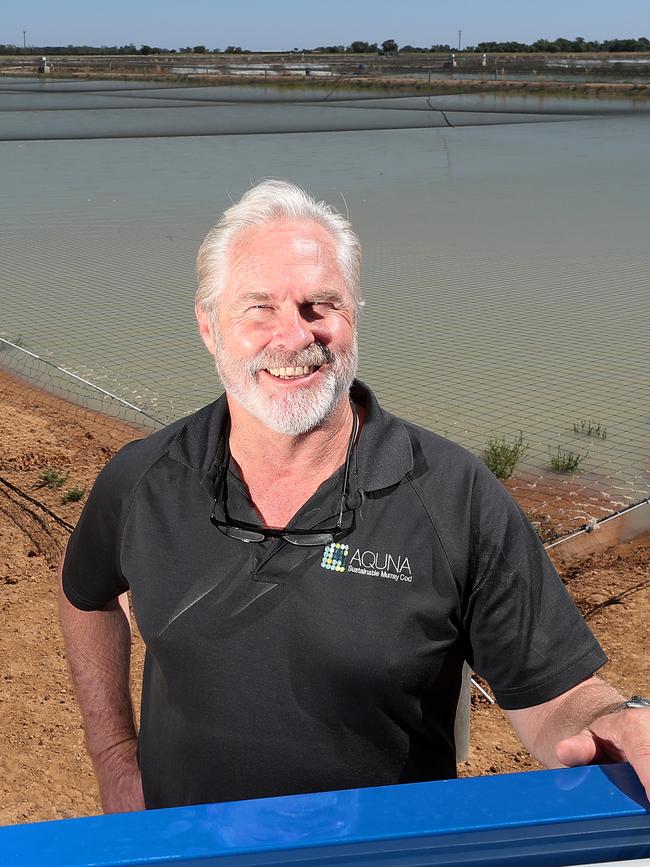
Aquna’s Murray cod are grown in giant land-based ponds on reclaimed farmland and no fish can escape and impact other species.
The nutrient-rich waste is reclaimed and used as fertiliser in adjoining fields, so it never leaves the property. Aquna also operates a processing plant outside of Griffith that ensures jobs are kept locally.
Like wagyu, Aquna is positioning cod as a luxury food. The fish is native to Australia, and there is no commercial fishing permitted of wild Murray cod. This has led to higher premiums.
Indeed, prices per kilogram have jumped 50 per cent in the past three years.
Aquna has been quietly working with chefs such as Sydney’s Josh Niland and celebrity chef Heston Blumenthal, and now it has got to the point where its fish are sold in top restaurants here and abroad.
In recent weeks Raffles Hotel in Singapore has added it to the menu, and Mr Anderson last year shipped nine tons to the Gordon Ramsay Grill in Kuala Lumpur, Malaysia.
Demand has surged to the point where it is putting a quota on orders, given it is facing its own supply squeeze.
The company is still suffering the lingering effects of the Covid-19 pandemic, whereby it sharply cut back the amount of fingerlings for future growth as orders dried up and the lack of airfreight closed down export markets. It has been building up supply, although that has taking time for the fish to grow.
“Here we are two-and-a-half years later not having enough fish coming out of the water, although we’ve turned that around with five million fish in the water,” Mr Anderson said.
About a quarter of these fish were ready now, but there was a bigger quota maturing for harvest over the next 12 months.
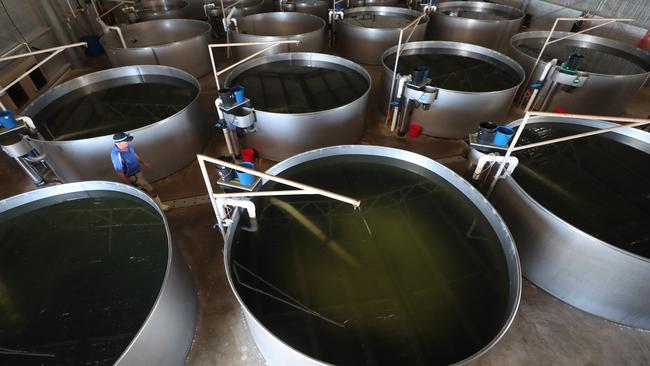
Murray Cod Australia last month completed a $20.4m capital raising – mostly from institutional investors. Retail investors were more lukewarm about the additional raising through an entitlement offer to existing shareholders.
Mr Anderson said the funds would be used to restock the pens as well as expand the facility to 78 ponds. This would result in capacity being increased to about 4000 tonnes of fish harvested annually within the next three years. That would double the current capacity.
Mr Anderson said there was more than enough demand between Australia and Asian customers, so that has limited a return to markets such as the US or Europe – but they were on the horizon as restocking was under way. The cost of airfreight, to transport fresh fish was elevated outside the region.
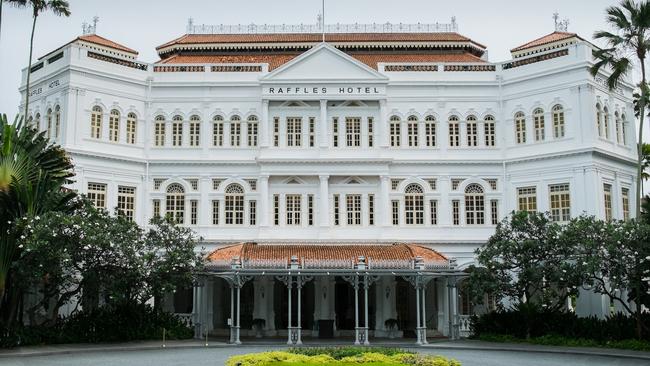
“However, freight rates into South East Asia have been great and so, as a result, we’ve got significant growth in Singapore, Hong Kong – even Indonesia, has taken quite a bit of fish,” Mr Anderson said.
Also, under way is the development of an automated frozen line, including the packaging, which offers longer shelf life for export markets and dramatically lowers transport costs.
Mr Anderson said much of his talks with prospective investors and customers have been about getting people comfortable with the idea of land based, large-scale aquaculture.
“We think of aquaculture as tuna or salmon farm as cages in the ocean … but the reality is that of the 60 million tons of farmed fish in the world, 85 per cent of that is farmed on land; it’s by far the most long-lived and sustainable model,” he said. “It’s been done for thousands of years.
“I think that now that people are beginning to understand the advantages of a land-based model, they see that from the production point of view there are a lot of advantages, both environmentally and economically.”
Originally published as Fish farmer hatches plan for the ‘wagyu’ of Murray cod


